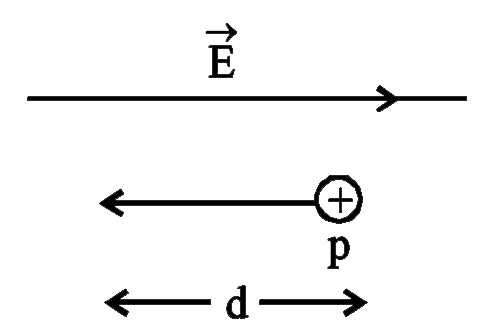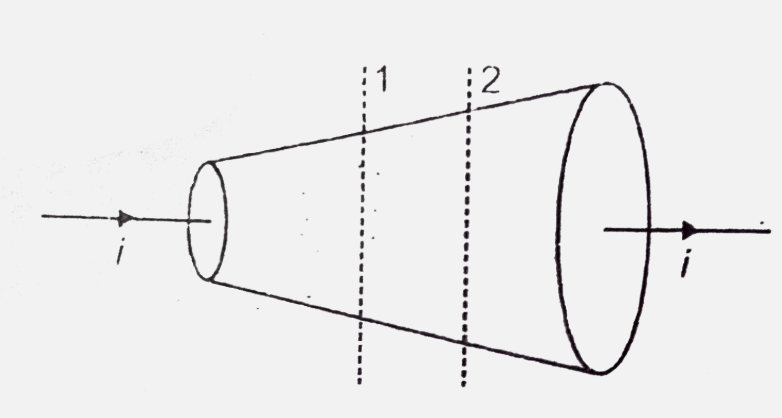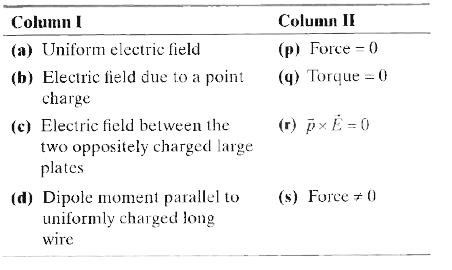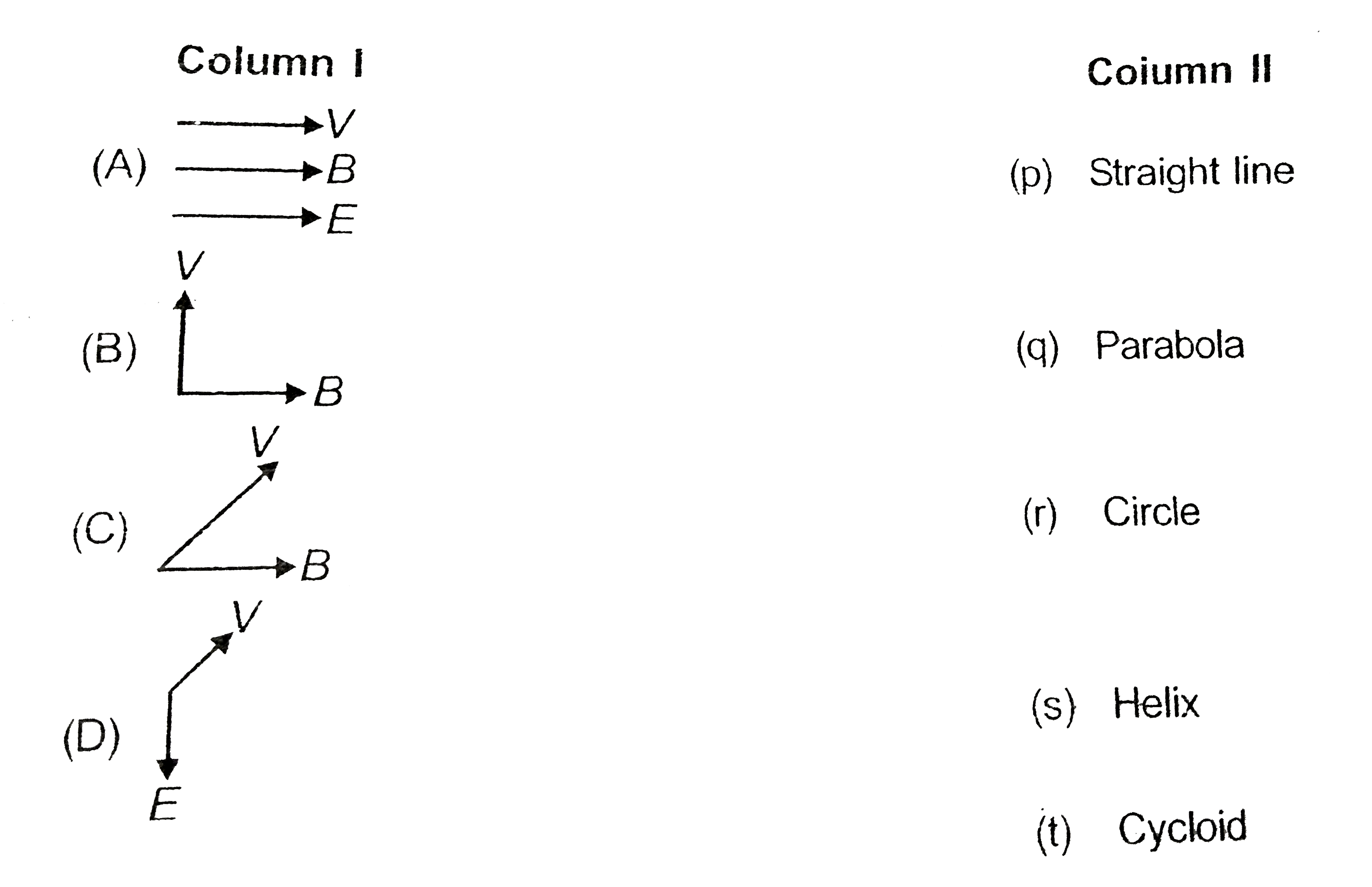Match the following
Column-I Column-II
1. Electric Charge (a) ohm
2. Potential difference (b) ampere
3. Electric field (c ) coulomb
4. Resistance (d) newton per coulomb
5. Electric current (e ) volt.
1-C,2-E,3-D,4-A,5-B
Topper's Solved these Questions
- ELECTRIC CHARGE AND ELECTRIC CURRENTBook:FULL MARKSChapter:ELECTRIC CHARGE AND ELECTRIC CURRENTExercise:EXERCISE-I (TRUE OR FALSE)
Explore 2 Videos
- ELECTRIC CHARGE AND ELECTRIC CURRENTBook:FULL MARKSChapter:ELECTRIC CHARGE AND ELECTRIC CURRENTExercise:EXERCISE-I (FILL IN THE BLANKS)
Explore 5 Videos
- ELECTRIC CHARGE AND ELECTRIC CURRENTBook:FULL MARKSChapter:ELECTRIC CHARGE AND ELECTRIC CURRENTExercise:ADDITIONAL QUESTIONS (LONG ANSWERS QUESTIONS)
Explore 4 Videos
- MEASUREMENTBook:FULL MARKSChapter: MEASUREMENTExercise:Activity
Explore 3 Videos
- FLUIDSBook:FULL MARKSChapter:FLUIDSExercise:Activity
Explore 1 Video
Similar Questions
A proton moves a distance d in a uniform electric field E ®as shown in the figure. Then which of the following statements are correct ?
(1) Electric field do a negative work on the proton
(2) Electric potential energy of the proton increases
(3) Electric field do a positive work on the proton
(4) Electric potential energy of the proton decreases

View SolutionCurrent I is following through a wire of non-uniform cross-section as shown. Match the following columns.

Column IColumn II(A)Current density(p)More at section 1 than 2(B)Electric field(q)More at section 2 than 1(C)Resistance per unit length(r)Same at both section 1 and 2 (D)Potential difference per unit length(s)Data insufficient
View Solution
Knowledge Check
In a conductor 4 coulombs of charge flows for 2 seconds . The value of electric current will be
A4 voltsB4 amperesC2 amperesD2 voltsThe electric potential at a point in free space due to a charge Q coulomb is Q×1011 volts. The electric field at that point is
A4π∈0Q×1020 volt/mB12π∈0Q×1022 volt/mC4π∈0Q×1022 volt/mD12π∈0Q×1020 volt/m
In which of the following cases more electrical energy is consumed per hour?
(i) A current of 1 ampere passed through a resistance of 300 ohms.
(ii) A current of 2 amperes passed through a resistance of 100 ohms.
View SolutionAn electric dipole is placed in an electric field. Column I is the description of electric field and the angle between the dipole moment →p and the electric field intensity →E and Column II gives the effect of the field on the dipole. Then,

View SolutionColumn I represents a charged particle being thrown in different combinations of magnetic and electric field: Column II represents the path followed by the charged particle

View SolutionColumn I represents a charged particle being thrown in different combinations of magnetic and electric field: Column II represents the path followed by the charged particle

View SolutionColumnI lists physical quantities for a uniform current carrying conductor . These quantities depend on quantities given in column II. Match entries in column I to all the quantities in column II on which it depends.
Column IColumn II(A)Resistivity(p)Length of conductor(B)Current through the conductor for a given potential difference across the condcutor(q)Electric field in conductor(C)Current density in condcutor for a given potential difference across the conductor (r)Temperature of conductor(D)Thermal power generated per unit volume for given value of potential difference across the conductor(s)Nature of conductor(t)Area of condcutor
View SolutionColumn I lists physical quantities for a uniform current carrying conductor . These quantities depend on quantities given in column II. Match entries in column I to all the quantities in column II on which it depends.
Column IColumn II(A)Resistivity(p)Length of conductor(B)Current through the conductor for a given potential difference across the condcutor(q)Electric field in conductor(C)Current density in condcutor for a given potential difference across the conductor (r)Temperature of conductor(D)Thermal power generated per unit volume for given value of potential difference across the conductor(s)Nature of conductor(t)Area of condcutor
View Solution
